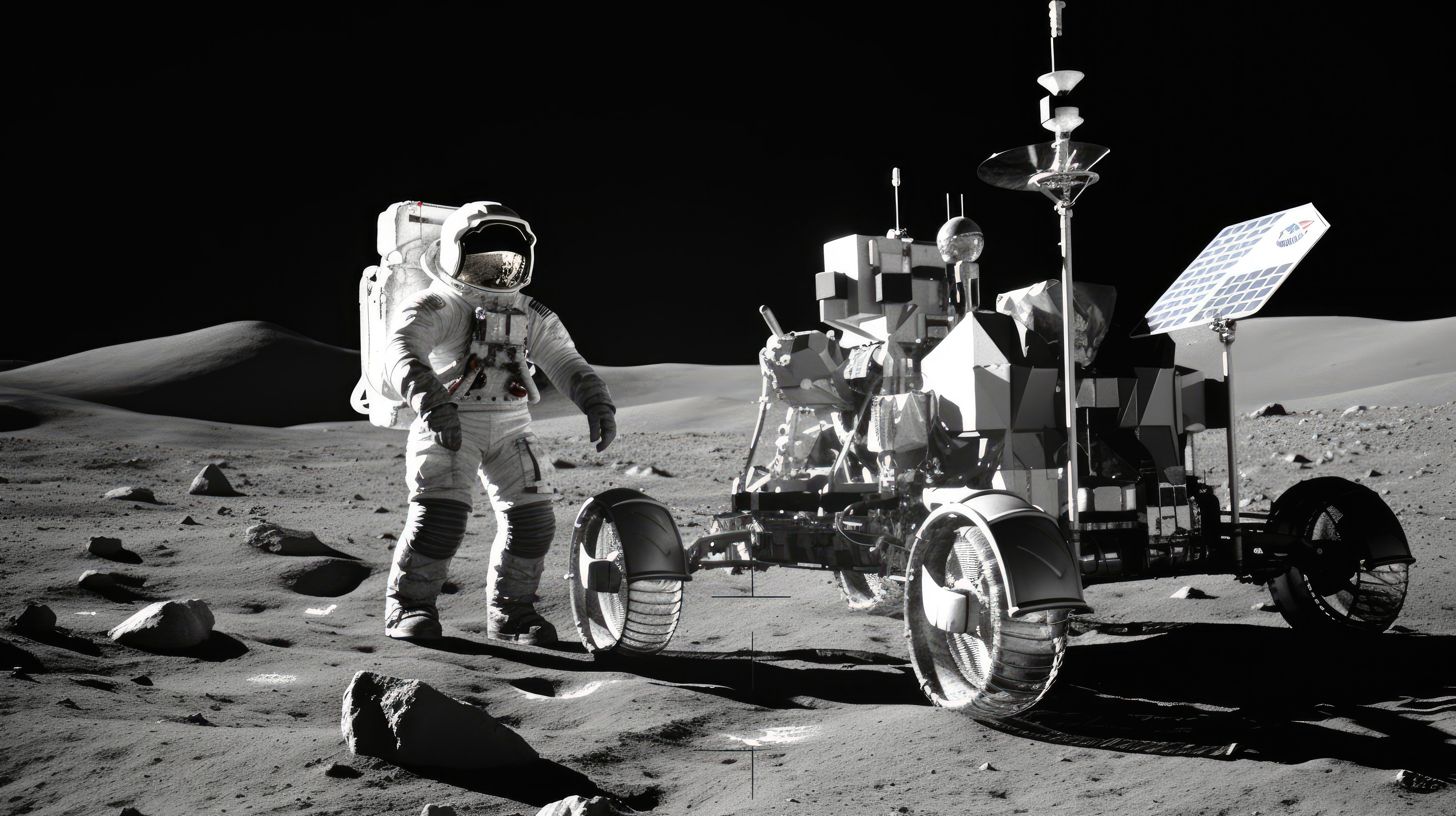Space History: Apollo Missions and Space Race Archives in 2025
Introduction
November 2025 marks a poignant milestone in space history: 56 years since Neil Armstrong's "one small step" on July 20, 1969, igniting the world's imagination and sealing the United States' victory in the Space Race. The Apollo program remains a testament to human ingenuity, engineering prowess, and geopolitical drama, showcasing NASA's audacious bid to land humans on the Moon amid Cold War rivalries. As declassified archives and anniversary reflections flood releases—like NASA's Summer 2025 History News & Notes and the 50th anniversary of the Apollo-Soyuz Test Project—these missions offer timeless lessons in collaboration, resilience, and exploration.
This retrospective weaves through the Space Race's origins, the Mercury and Gemini precursors, the Apollo saga's triumphs and tragedies, and archival gems illuminating untold stories. From Sputnik's 1957 beep to Apollo 17's 1972 finale, the era's archives—now digitized in NASA's Project Apollo Image Gallery and TheSpaceRace.com—reveal not just technological feats but the human spirit's reach for the stars. In an age of Artemis returns and private lunar ventures, Apollo's legacy endures: A race not just to the Moon, but to our better selves.
The Space Race Begins: From Sputnik to Mercury
The Space Race ignited on October 4, 1957, when the Soviet Union's Sputnik 1—a gleaming aluminum sphere the size of a beach ball—beeped its way into orbit, shattering American complacency and launching a decade of rivalry. Weighing 83 kg and transmitting radio pulses for 21 days, Sputnik symbolized Soviet technological superiority, prompting U.S. President Eisenhower to create NASA in 1958. The Mercury program, NASA's first human spaceflight effort, responded with Project Mercury: Seven astronauts—Scott Carpenter, Gordon Cooper, John Glenn, Gus Grissom, Wally Schirra, Alan Shepard, and Deke Slayton—trained for suborbital hops and orbits.
Mercury-Redstone 3 (May 5, 1961) saw Shepard's 15-minute Freedom 7 flight, the U.S.'s first, edging Yuri Gagarin's April Vostok 1. Glenn's Friendship 7 orbited Earth thrice in February 1962, restoring parity. Archives like the NARA's Pieces of History blog detail these moments, including declassified memos on Soviet tech espionage. TheSpaceRace.com's Mercury section, updated in 2025, hosts interactive timelines, revealing how Mercury's 4.5-ton capsules paved Apollo's path—lessons in g-forces and life support that saved lives later.
Gemini: The Bridge to the Moon
Gemini's 10 missions (1965-1966) tested Apollo essentials: docking, spacewalks, and duration flights. Gemini 3 (March 1965), Gus Grissom and John Young's "Molly Brown," marked the first crewed two-seater. Gemini 4's Ed White's 20-minute EVA (June 1965) proved humans could work in a vacuum, while Gemini 7's 14-day endurance (Frank Borman, Jim Lovell) simulated lunar trips.
Gemini 6A's December 1965 rendezvous with Gemini 7—within 1 foot at 17,500 mph—mastered orbital maneuvers. Archives from the Connecticut State Library's History Day guide, updated November 4, 2025, include Gemini's EVA footage, highlighting suit mobility issues resolved for Apollo. Britannica's October 2025 timeline excerpt notes Gemini's 12-ton Agena targets, precursors to Apollo's LM docking. The program's unsung hero: Pete Conrad's Gemini 5 nine-day flight, enduring fuel cell failures that informed Apollo redundancies.
Apollo: Humanity's Lunar Leap
Apollo, budgeted at $25B (1960 dollars), aimed for lunar landings by the decade's end. Apollo 1's January 1967 fire killed Grissom, White, and Chaffee, prompting redesigns—NASA's 2025 Spring History News & Notes reflects on this tragedy's safety legacies.
Apollo 7 (October 1968) tested CSM in Earth orbit, while Apollo 8's Christmas Eve lunar orbit (Borman, Lovell, Anders) broadcast "Earthrise," a cultural icon archived in the Project Apollo Archive. Apollo 9's March 1969 LM test and Apollo 10's May dress rehearsal set the stage.
Apollo 11: The Eagle Has Landed
July 20, 1969: Armstrong and Aldrin's 6.5-hour EVA, collecting 22 kg samples. BBC's August 8, 2025, article on "last Moon men" recounts Neil's "magnificent desolation," with Armstrong's suit now at the Smithsonian. Archives like Space.com's Apollo Coverage (August 22, 2025) detail Apollo 17 samples revealing lunar landslides.
Later Apollos: Exploration's Peak
Apollo 12 (Pete Conrad's "Whoopee!") pinpointed Surveyor 3; Apollo 13's April 1970 odyssey, "successful failure," inspired the 1995 film—NASA's 2025 Summer Notes featuring excerpts from Lovell's logs. Apollo 14's Alan Shepard golfed; Apollo 15's lunar rover covered 27 km. Apollo 16's John Young bounded, collecting orange soil; Apollo 17's Gene Cernan, the last on the Moon, warned of return.
TheSpaceRace.com's Apollo section, a 2025 digital archive, hosts 100,000+ images from the Project Apollo Archive.

The Space Race's Geopolitical Drama: Archives Unveiled
The Race was Cold War theater: U.S. vs. USSR, with spies and propaganda. Declassified 2025 NARA files reveal CIA's 1961 U-2 overflights of Soviet pads, per Pieces of History. The Apollo-Soyuz Test Project (ASTP), 50th anniversary in July 2025 (NYT July 15), linked rivals in orbit—Détente's handshake, archived in NASA's Spring 2025 Notes.
Women in the Race: Hidden Figures' mathematicians, honored in 2025's History Day LibGuide (updated November 4). Soviet cosmonauts like Valentina Tereshkova (1963) contrasted U.S. delays.
Archival Treasures: 2025 Releases and Reflections
NASA's Summer 2025 History News & Notes spotlights transitional leadership, including von Braun's Saturn V blueprints. The Apollo Archive's 2025 high-res scans of 70 mm Hasselblad photos reveal lunar dust's electrostatic cling. Space.com's August 22 piece on Apollo 17 samples analyzes landslides from orange soil, tying them to Artemis.
TheSpaceRace.com's 2025 updates include Gemini EVA transcripts, while Britannica's October timeline excerpt adds color to Sputnik's beep.
Legacy and 2025 Reflections: Apollo's Enduring Echo
Apollo's 400,000-person effort landed 12 men, returning 382 kg of samples—fueling 2025's Artemis. CNN's November 1 report on flux in moon plans echoes Apollo's delays, but optimism prevails: Artemis III's 2026 target.
X debates: @NASAHistory's Apollo threads inspire, while @SpaceRacePod's 2025 episodes dissect Soyuz détente.
Conclusion
Apollo and the Space Race, archived in 2025's releases, embody humanity's boldest leap—from Sputnik's spark to lunar dust. As NASA's Summer Notes reflect, their lessons endure: Collaboration triumphs over rivalry. Gaze moonward—the next race beckons.